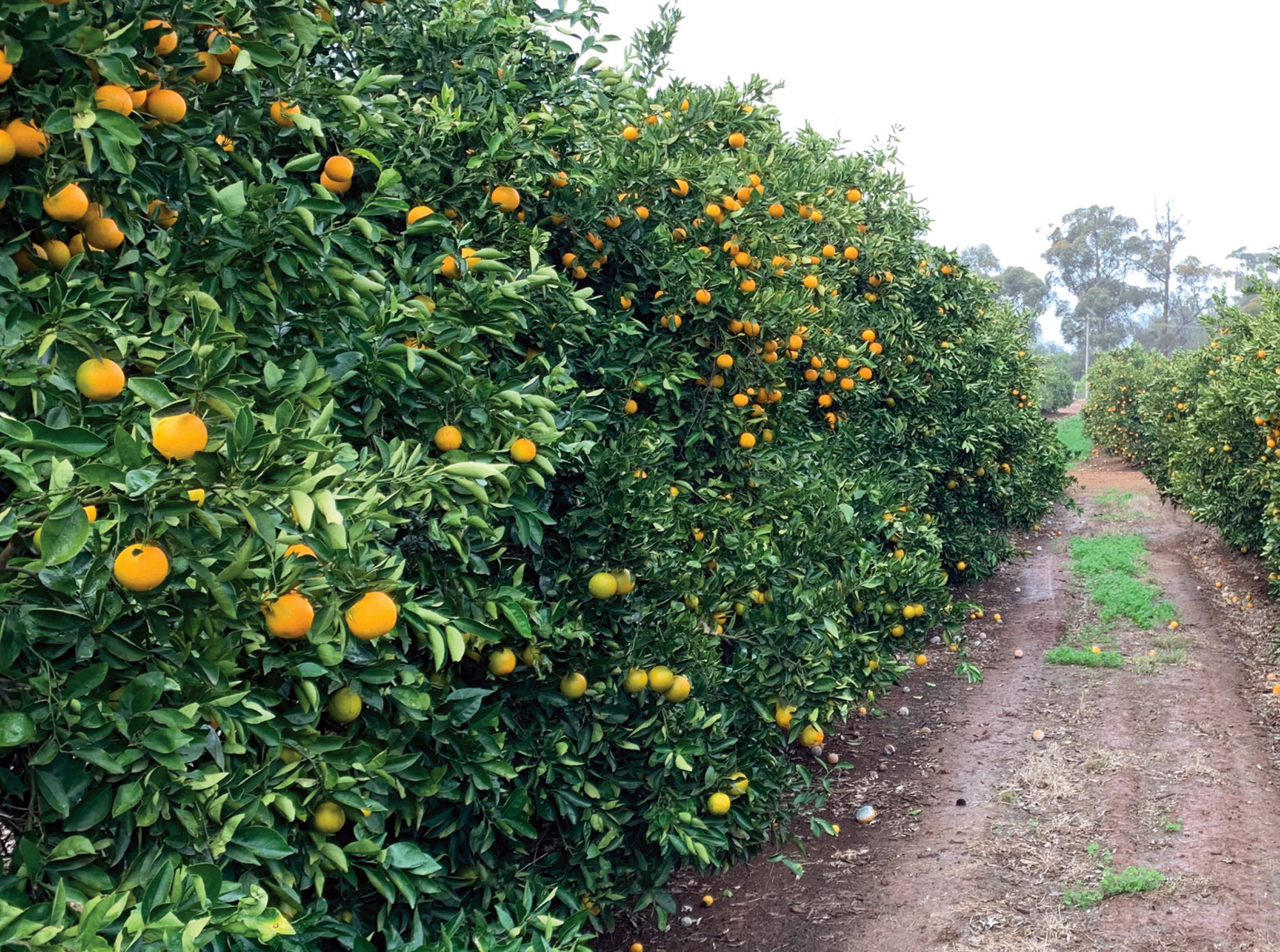
Latest
News
When Less is Best – for your crops and your hip-pocket
Case Study: The negative impacts of too much synthetic fertiliser.
Do you sometimes feel like you’re going a little insane? Applying more and more synthetic fertiliser to boost yield because that’s what everyone else does, yet your efforts and skyrocketing input costs result in either no yield improvement or even declining yield, and stressed crops?
Albert Einstein famously defined insanity as ‘doing the same thing over and over again and expecting different results!’
A citrus grower in the NSW Riverina region reached out to BioAg to evaluate his poor-performing orchard. The trees had a sparse canopy, and leaves were stunted and off colour. The grower was familiar with BioAg having commenced using BioAg products in 2014 when he was developing a hazelnut orchard.
BioAg’s Horticulturalist and Viticulturalist Stephan Logoida performed soil and tissue tests, documented treatment history, building a complete picture of the current orchard’s status.

Prior to the BioAg program, the orchard shows signs of poor nutrition – low density canopy, severe zinc deficiency and a high rate of fruit drop.
The information clearly showed that the orchard was being over-fertilised, even though historical applications were based on agronomic advice. The historical message had been ‘to get more fruit, you need to apply more fertiliser.’
The soil test highlighted that the overuse of synthetic fertilisers had broken down all-important soil structures, increased nutrient loss pathways, and reduced the soil’s ability to supply nutrients when the crop required it.
BioAg CEO Martin Metz explains the dilemma for growers, “The hardest thing for a grower is to be different and step into the unknown. However, at a time of extremely high fertiliser prices, reducing the nitrogen and or potassium fertiliser use by 10 to 30% for the same if not improved yield, is significantly beneficial for both your hip pocket and the crop.”
The approach of applying more fertiliser to overcome the issues of poor uptake from the soil, only further reduced the orchard’s soil performance and created nutrient imbalances that negatively impacted the supply of micronutrients, further damaging the trees. In fact, not only was additional nitrogen fertiliser exacerbating poor crop performance, but it also added a costly and unnecessary input expense for the grower.

In comparison, the canopy density has dramatically increased during the BioAg program, with less fruit drop and better yield.
“Every orchard or crop will have different opportunities and different solutions given their soils are different,” explains
BioAg Horticulturalist and Viticulturalist Stephan Logoida.
“We build a solution specific to the block and the farmer. Typically, the solution to many yield and quality issues is right under the farmer’s feet. We simply want to help growers to understand their soils and how they can be naturally improved for peak crop performance.
“For the orchard condition, we recommended improving the soils nutrient use efficiency using our biostimulant products.
For the soil – Soil & Seed and HydraHume; and for foliar treatments – HydraSea50, Balance & Grow and Fruit & Balance,” advised Stephan.
The expectation was that it would take 2 to 3 seasons to fully rebuild the soils. It was also recommended that synthetic fertiliser applications be reduced.

Irregular, chlorotic leaf spots, narrow leaves and severe die-back of twigs, related to zinc deficiency.
Initially the grower followed the program but, concerned that “everyone else” was still applying large amounts of fertiliser, he applied additional nitrogen. Unfortunately, this reversed the early gains and resulted in a harvest typical of prior seasons.
Following the season, Stephan and the grower discussed the negative impact on the crop of adding more chemical fertiliser. Having seen the early benefits of the program, the grower stuck with BioAg’s tailored program in the second season.
The second season results saw the orchard achieve a vastly improved crop yield above the 50 tonne per hectare target, more than three times prior seasons, with 30% less nitrogen used than is typically recommended.

The zinc deficiency responded well to the BioAg program, resulting in good new growth and healthier trees.
“Healthy balanced nutrient-rich soils produce strong healthy high-yielding trees and the BioAg program certainly turned the orchard performance around. The actual cost was also cheaper than using traditional chemical fertilisers with the ongoing benefits and soil health effectively free after the initial year of application,” said the grower.
Click here to read more about this case study, including soil parameter statistics and crop yield.


Recent Comments